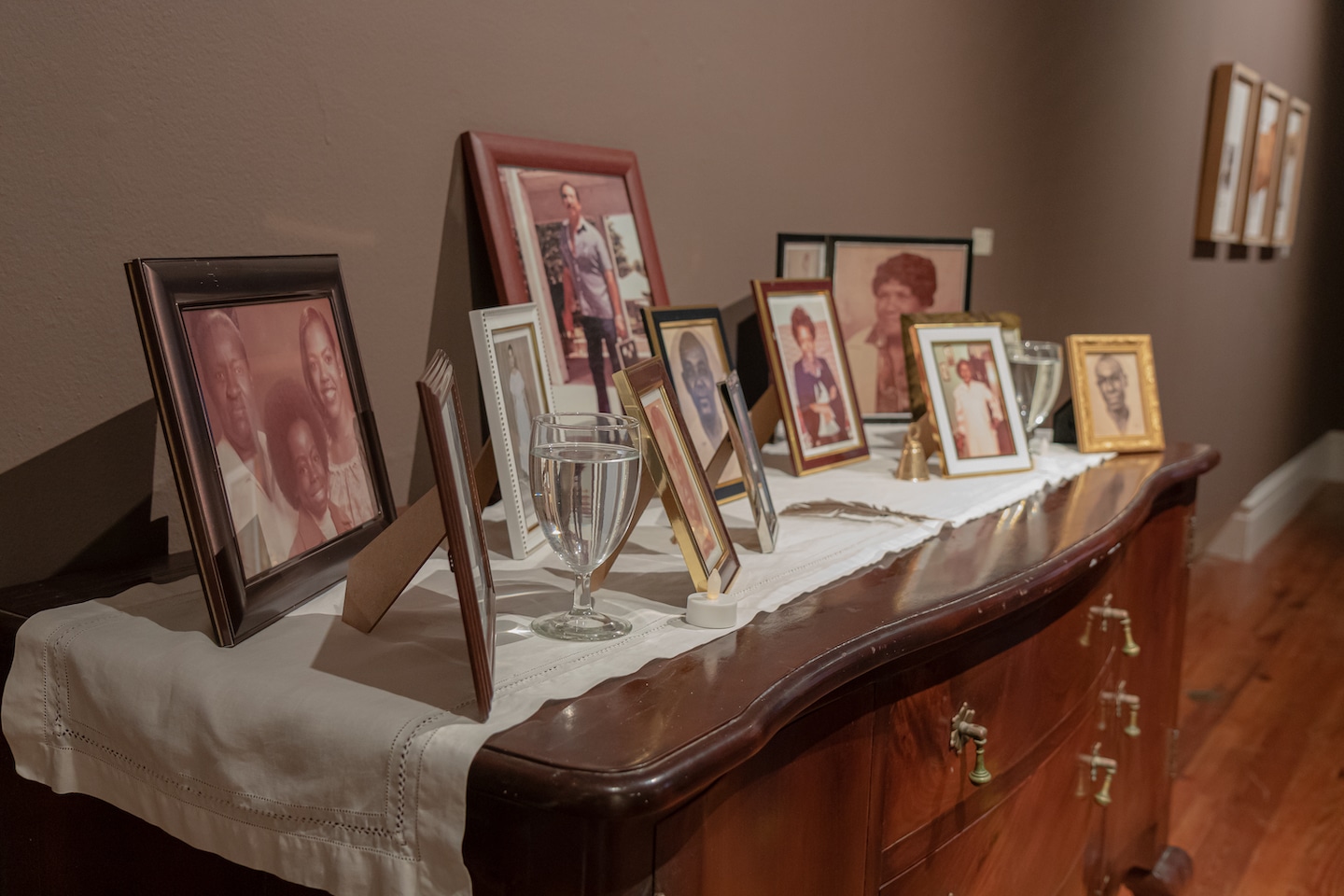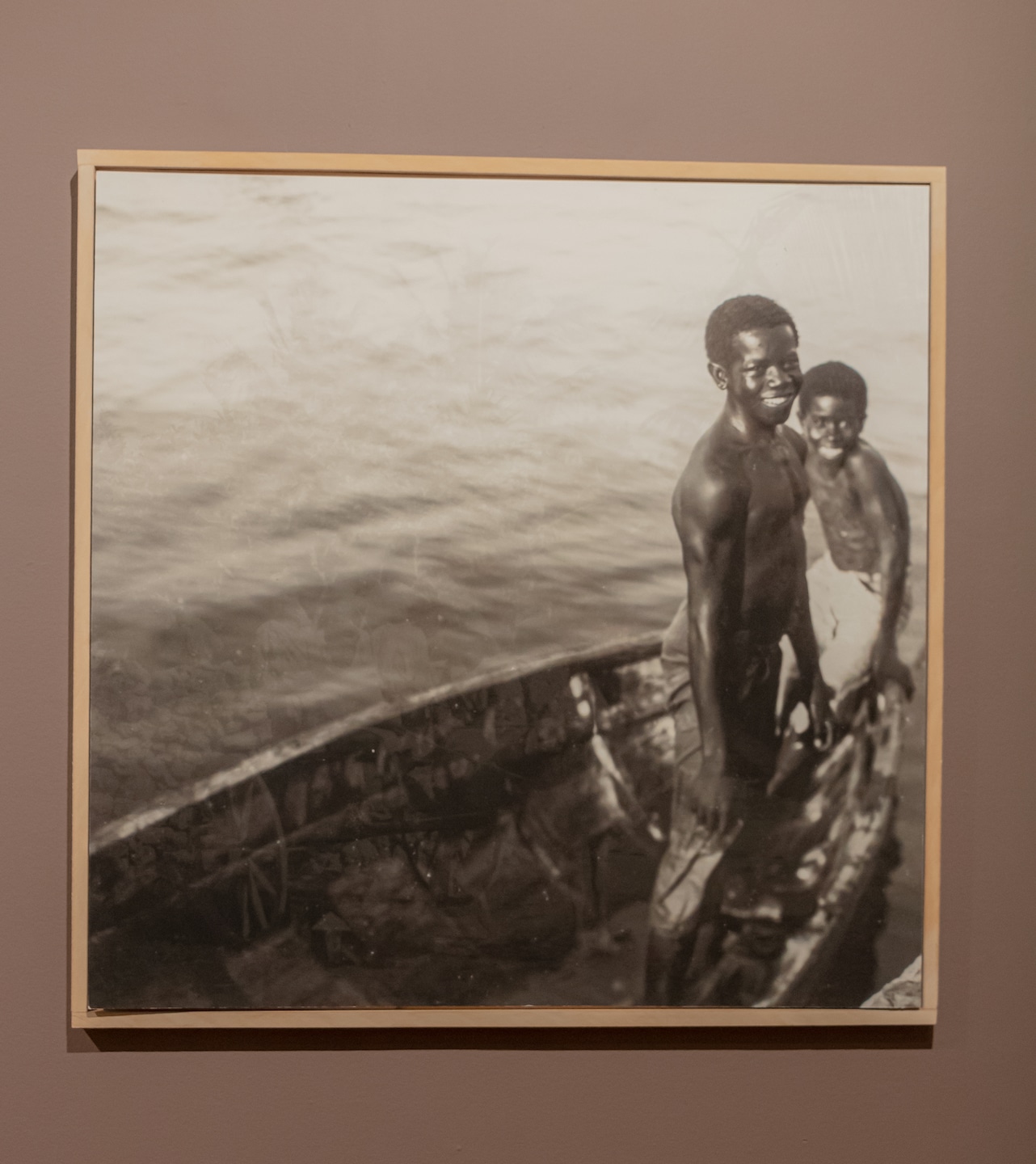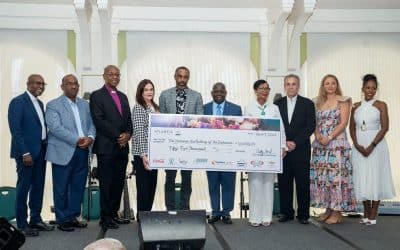
By Erica Wells
Bahamian and Trinidadian artists investigate another way to interpret the archive in Double Dutch 8
For centuries the majestic silk cotton tree has played an important role in the cultural landscape of communities in The Bahamas and the Caribbean.
Beneath the towering branches and among the giant walls of roots, the iconic tree served as an important venue for regular gatherings for the people of freed slave settlements established in New Providence after the abolition of slavery.
In places like Grant’s Town, Fox Hill, Adelaide, Gambier and Carmichael, the silk cotton tree was the place from which government announcements were made, political discussions and debates held, and ‘silk cotton justice’ meted out in informal courts.
According to folklore, the silk cotton tree also had another – more sacred – purpose, as a dwelling for local spirits. Legend has it that residents so revered the ‘ghost/duppy’ tree that they protested attempts to cut it down over the fear of what might happen to the spirits held within its ancient trunk and branches.
In the latest installment of the Double Dutch exhibition series at the National Art Gallery of The Bahamas (NAGB), Bahamian artist Tamika Galanis and Trinidadian artist Rodell Warner explore the role of the silk cotton tree not only as a witness to the history of a space and its people but as repository of information.
“There is this weird lack of knowledge not being handed down,” says Natalie Willis, the show’s co-curator. “You can think of the tree as something that holds these memories, that holds the spirit. It’s another way to interpret the archive.”
For Ms. Willis, the work represents an investigation into what archives can look like in the region. “As Derek Walcott imagines the sea as a historical archive in the Caribbean story in ‘The Sea is History,’ perhaps we can consider archives to not just include pages and pictures and ephemera of times long gone, but it could also exist as something much more intuitive and abstract. After all, what is an archive if not a series of witnessings?”
The work of both Ms. Galanis and Mr. Warner is rooted in the collection and reimagining of historical records of the Caribbean.
Ms. Galanis is a documentarian and multimedia visual artist whose work focuses on archiving, with a particular emphasis on Bahamian cultural identity and preservation. Her work includes traditional documentary and new media abstractions of written, oral and archival histories.
Mr. Warner, who is known for his investigation of Caribbean archives, works primarily in new media and photography.
“In The Bahamas and the Caribbean, we get told a version of our history that’s told from a specific standpoint,” says Ms. Willis. “The retelling (of that history) is as important as knowing the history in the first place.”
For this exhibition “Double Dutch: ancestral remains to be seen,” Ms. Willis decided to offer the artists images from the NAGB’s national collection, specifically colonial photography (the term used to describe the idea that during colonialism photographs portrayed explicit cultural ideas and justified colonization).
Both artists chose to work heavily with the silk cotton tree.
One of the images used by Ms. Galanis and Mr. Warner was captured by well-known American photographer Jacob Frank Coonley, who lived in The Bahamas in the late 1800s. Its subject is an enormous ancient silk cotton tree, with five men in uniform and a woman in white carrying a tray of goods atop her head standing at the base of the tree.
The tree captured in Coonley’s photograph once stood in the center of town between the downtown courts and was known around the world. It is believed to have been planted in the early 1700s and is said to be the mother of all silk cotton trees planted on New Providence.
It was described repeatedly by visiting naturalists, journalists and tourists as “the finest and most curious cotton tree known.” It is said to have been the “most illustrated and photographed” silk cotton tree in the world before it was removed in the mid-1900s.
Digital Projection by Rodell Warner using fractal digital images in a colonial photography by J. F. Coonley
Mr. Warner successfully captures the otherworldliness of the silk cotton tree with the insertion of fractal digital images in the Coonley photograph, which is digitally projected in the gallery’s Ballroom on the second floor. These GIF formatted images are reminiscent of fairies or spirits, who appear very much at home among the gigantic folds of this ancient tree and seemingly wise tree.
Mr. Warner’s “spirits” also appear in a diptych titled “Augmented Archives (Brothers).” The piece focuses on two colonial photographs – one of a street in Grants Town and the other of a sailing sloop loaded with livestock.
The effect of the digital “spirits” floating in such a historic setting is unsettling. It made this viewer wonder about the lives and experiences of the photographs’ subjects belied by the idyllic settings.
Ms. Galanis’ work engages the spirit or “speret,” as it is known in the Bahamian vernacular, through a variety of mediums, including mixed media, installation, digital prints on wood and a film collaboration with Bahamian diasporic storyteller and scholar, Charlotte Henay.

Her installation titled “Community Ancestral Altar” consists of a sideboard covered with family photographs, much like you would find in a typical home. What is not so typical are the two glasses of water and tea lights placed on either side of the tabletop, a nod to African spiritual practices, explains Ms. Galanis.
Viewers are invited to light their own tea light in honor of an ancestor and add a photograph to the “altar.”

At first glance, Ms. Galanis’ digital prints on wood series –“Two Things Can Be True at Once” – look like familiar historical photographs depicting Parliament Street, two smiling boys on a dinghy and a Nassau street lined with royal palms.
Although upon closer examination, the viewer’s attention is captured by the faintest of images superimposed over the main photograph, creating a ghost-like effect and an eerie reminder that the stories of the “sperets,” our ancestors, are always with us and shape who we are.
Perhaps the crown jewel in Ms. Galanis’ contribution to the exhibition is a six-minute film that follows the ritual of an Obeah woman’s visit to a silk cotton tree in Adelaide Village to petition a spirit.
The stunning cinematography and voice over of Ms. Henay reading her poetry are a powerful account of the significance of the silk cotton tree, which Ms. Galanis describes as a “repository of the dead and portal for spirits.”
The collaboration between Ms. Galanis and Mr. Warner ultimately tells a compelling story about the people of the Caribbean. The exhibition not only formally documents elements of our shared history, but it creates an appreciation for where we come from.
For Ms. Willis, this feeling of appreciation is powerful. “Although archiving is often seen as a purely critical or academic exercise, the works of Ms. Galanis and Mr. Warner introduce a more human element to the process.
“There’s something powerful about something not shying away from the idea that feeling adds meaning to what we do and informs what we do.”
About Double Dutch
The Double Dutch exhibition series brings together regional artists. It provides an important opportunity for collaboration and exchange and according to the Gallery’s website, “the project works against ideas of nationalism and the insularity of our creative environs by creating an experimental hub to explore regional and diasporic culture, our creative acumen and sensibilities.”

